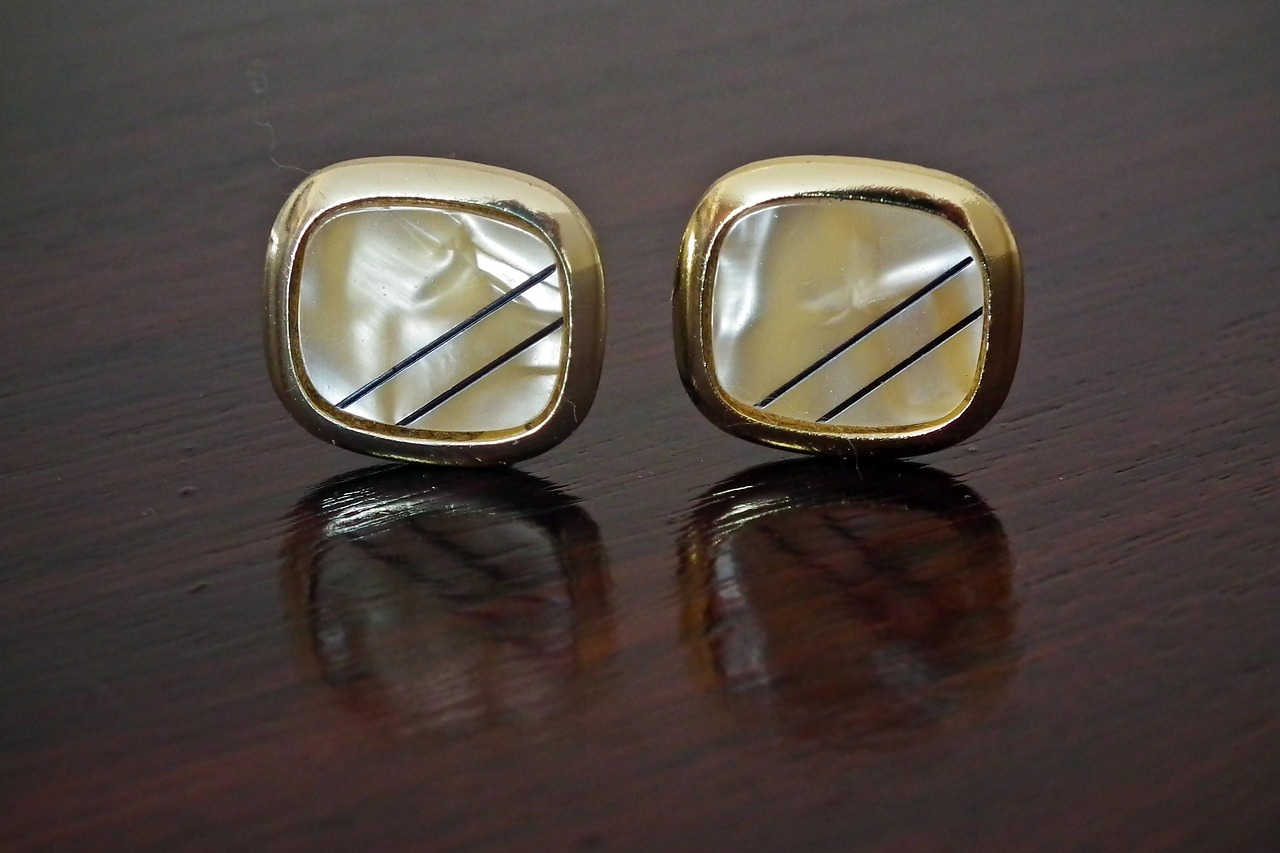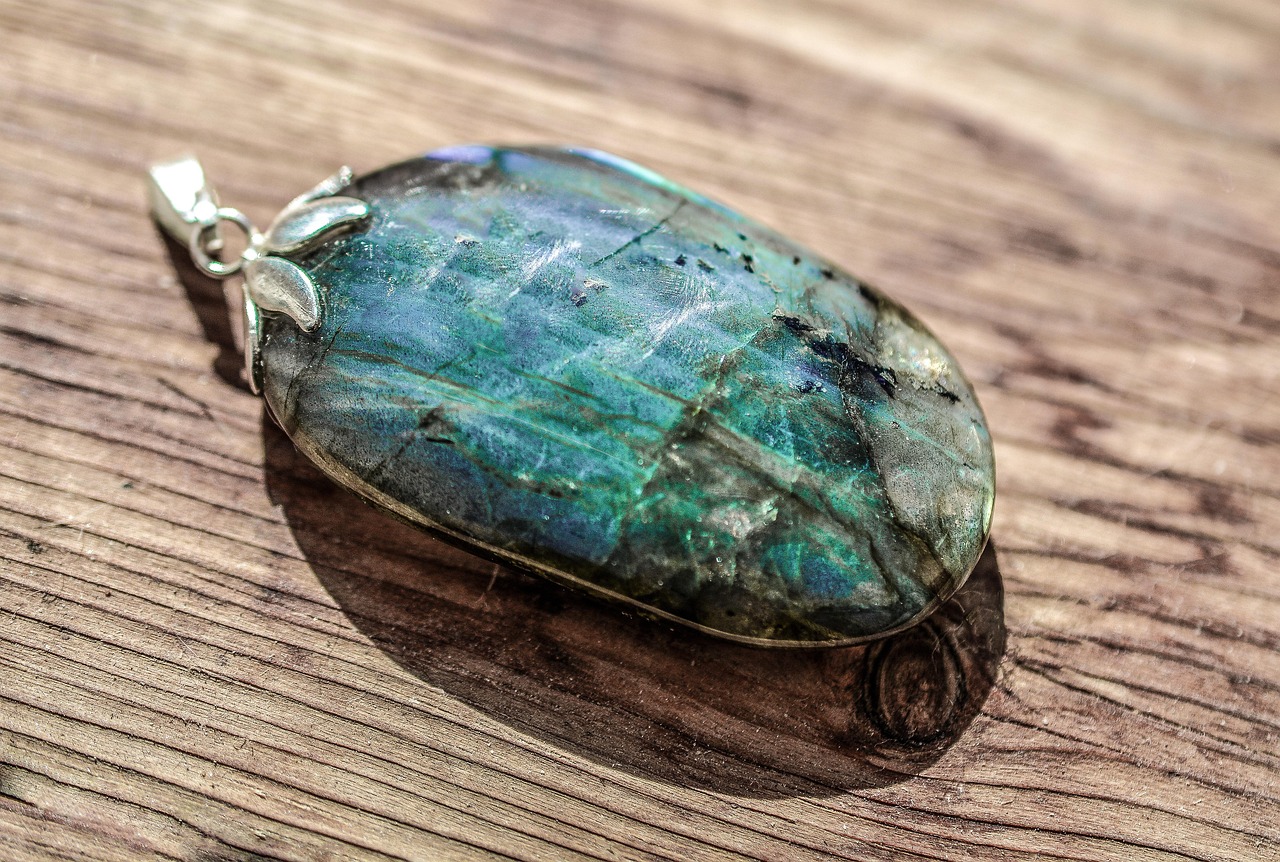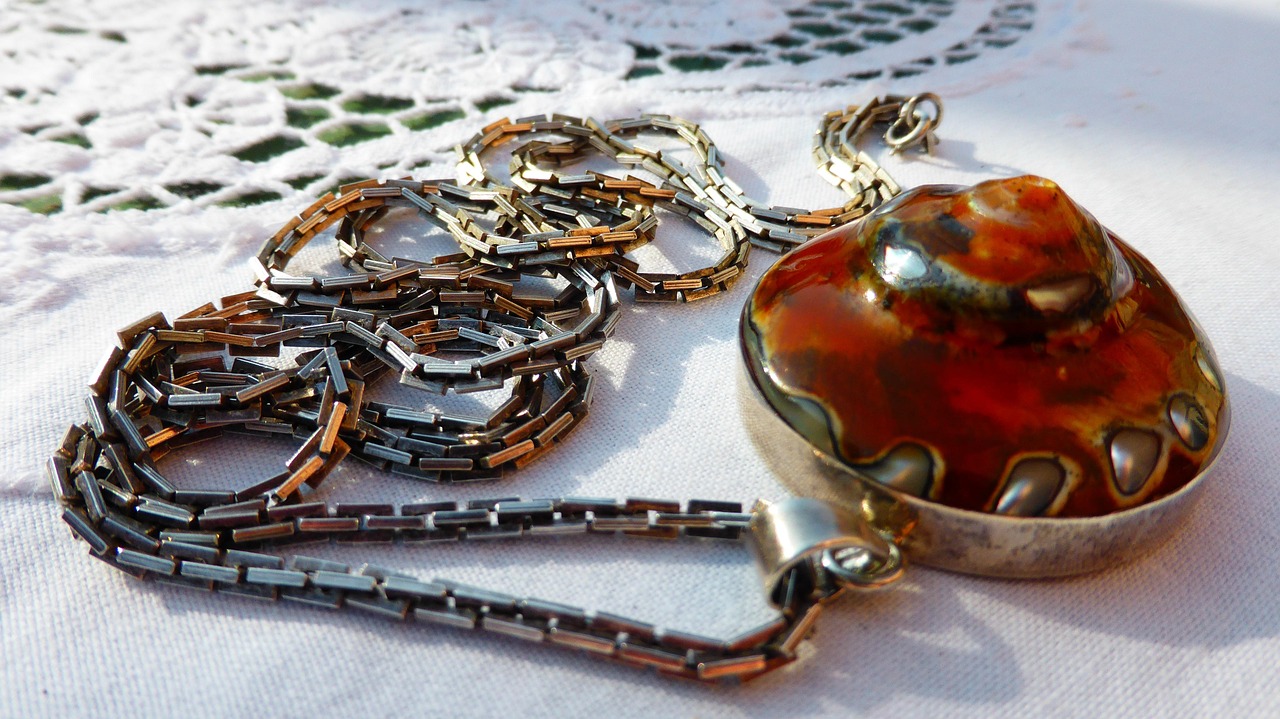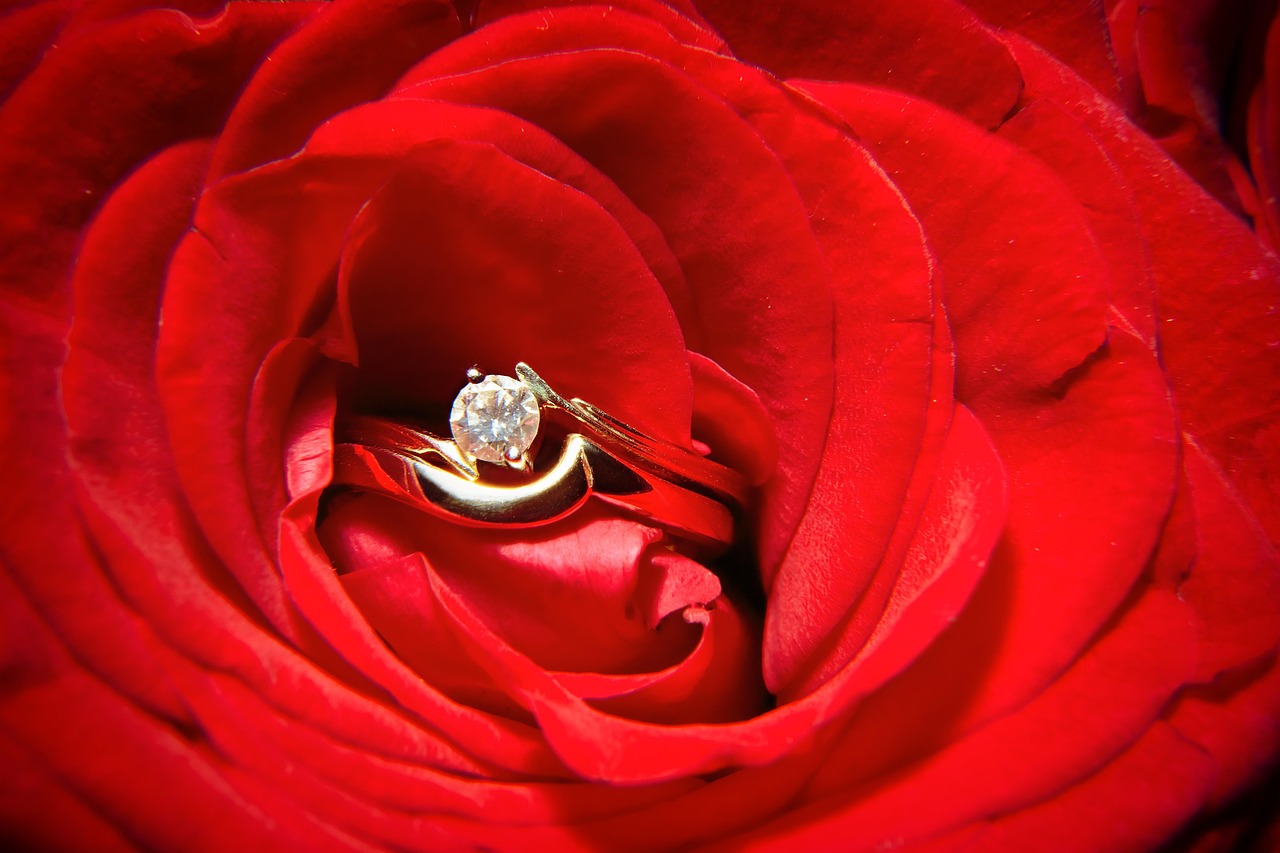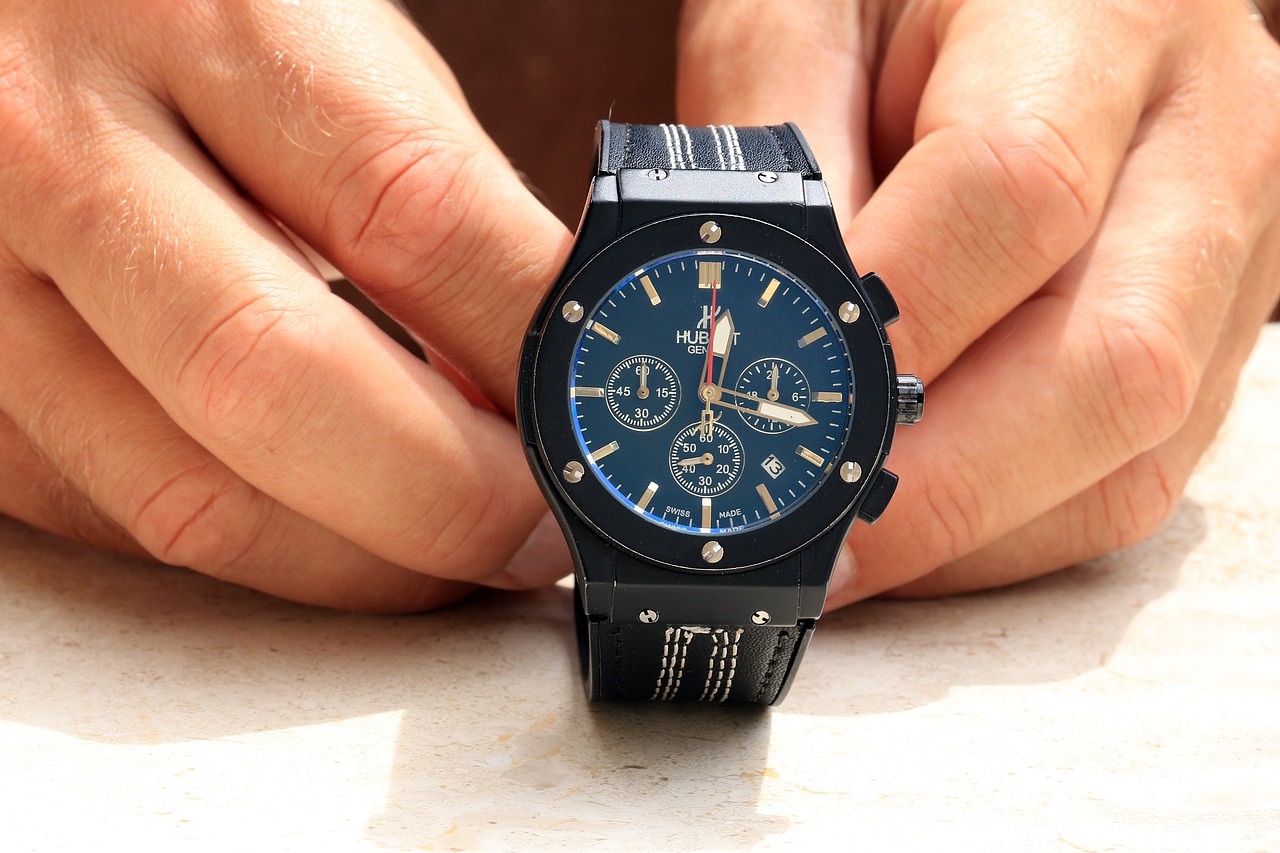Jewelry has been an essential part of human culture for thousands of years, serving not only as adornment but also as a profound status symbol. This article delves into the historical significance of jewelry, tracing its evolution, cultural meanings, and the psychological factors that contribute to its lasting appeal.
Throughout history, jewelry has consistently represented wealth, power, and social standing. The intrinsic value of precious metals and gemstones, combined with the artistry involved in their creation, makes jewelry a tangible marker of success and prestige. For many, wearing jewelry is a way to communicate their social status without uttering a word.
The evolution of jewelry mirrors the changing values and artistic movements of society. From the ornate designs of ancient civilizations to the minimalist trends of today, jewelry has continually transformed while retaining its symbolic significance.
In ancient cultures, jewelry was not merely decorative; it was a symbol of authority and divine right. Rulers adorned themselves with elaborate pieces, which signified their power and connection to the divine.
Jewelry in ancient Egypt was intricately designed, often featuring symbols of gods and the afterlife. This connection between the divine and earthly power was evident in the elaborate burial jewelry that accompanied pharaohs to the afterlife.
In ancient Rome, jewelry served as a means to display one’s wealth and social class. The use of precious gemstones and intricate designs was a direct reflection of an individual’s status within the rigid class system.
Today, jewelry continues to evolve, influenced by contemporary fashion trends and cultural shifts. Modern pieces often blend traditional craftsmanship with innovative designs, appealing to diverse tastes and values.
Investing in jewelry is often viewed as a way to preserve wealth. High-quality pieces can appreciate over time, making them a popular choice for individuals seeking to secure their financial future.
Beyond its monetary value, jewelry often carries significant emotional weight. Heirloom pieces and personalized designs can symbolize love, cherished memories, and important milestones, deepening their importance for the wearer.
For many individuals, jewelry serves as a powerful form of self-expression. Unique designs and styles allow wearers to convey their identity and values, making jewelry a deeply personal accessory.
Cultural influences significantly shape the meaning and value of jewelry. Different societies attribute various meanings to specific materials and designs, reflecting their unique traditions and histories.
Ethnic jewelry often embodies cultural heritage, showcasing traditional craftsmanship and designs. Wearing such pieces fosters a sense of pride and connection to one’s roots, reinforcing cultural identity.
Modern jewelry trends are increasingly influenced by global cultures, leading to a fusion of styles. This blending creates innovative designs that appeal to a broader audience while maintaining cultural significance.
The rise of social media has transformed how jewelry is marketed and consumed. Platforms like Instagram and Pinterest enable rapid trend dissemination, shaping consumer choices and perceptions of status.
Celebrity endorsements and influencer partnerships significantly impact jewelry trends. When public figures showcase specific brands or styles, they elevate the perceived status of those pieces, making them highly desirable.
The emergence of online marketplaces has democratized access to luxury jewelry. Consumers can explore a wide range of options, making high-status pieces more attainable than ever before, thereby reshaping the landscape of jewelry consumption.

What Makes Jewelry a Status Symbol?
Jewelry has been an integral part of human culture for centuries, serving as a symbol of wealth, power, and social standing. Its significance transcends mere aesthetics, as the intrinsic value and exquisite craftsmanship often mirror the owner’s status, making jewelry a tangible marker of success and prestige.
Jewelry’s role as a status symbol is multifaceted. It encompasses not only the material value of the pieces but also the cultural significance and personal narratives attached to them. Historically, jewelry has been used to denote rank and authority, often crafted from precious metals and adorned with rare gemstones.
- Historical Context: In ancient civilizations, jewelry was often reserved for the elite. Rulers and nobility adorned themselves with intricate pieces that showcased their wealth and power.
- Craftsmanship: The skill involved in creating fine jewelry contributes to its status. Pieces that exhibit exceptional artistry and detail are often seen as more prestigious.
- Material Value: The use of precious materials such as gold, silver, and diamonds inherently elevates a piece’s status. The rarity of these materials adds to their allure and value.
The evolution of jewelry reflects the changing values of society. From the ornate designs of ancient Egypt to the sleek lines of modern minimalist styles, jewelry has continually adapted while retaining its symbolic significance. Ancient jewelry often served dual purposes, acting as both decorative items and symbols of power.
Jewelry is not just about physical appearance; it also plays a significant role in psychological well-being. Wearing jewelry can enhance self-esteem and promote feelings of confidence. The connection between jewelry and personal identity is profound, as individuals often choose pieces that resonate with their values and aspirations.
Investing in jewelry is a popular choice for many, as it is often perceived as a way to preserve wealth. High-quality pieces can appreciate over time, making them an attractive option for those looking to secure their financial future. Additionally, jewelry often carries emotional value, serving as a reminder of significant life events or relationships.
Cultural influences play a vital role in shaping the meaning and value of jewelry. Different societies attribute various meanings to specific materials and designs, reflecting their unique traditions and histories. For example, ethnic jewelry often embodies cultural heritage, showcasing traditional craftsmanship and designs that foster a sense of pride and connection to one’s roots.
In the digital age, social media has revolutionized how jewelry is marketed and consumed. Platforms like Instagram and Pinterest allow for rapid trend dissemination, influencing consumer choices and perceptions of status. Celebrity endorsements and influencer partnerships have a profound impact on jewelry trends, as public figures can elevate the perceived status of specific brands or styles.
The rise of online marketplaces has democratized access to luxury jewelry. Consumers can now explore a wide range of options, making high-status pieces more attainable than ever before. This accessibility has changed the landscape of jewelry consumption, allowing individuals from various backgrounds to engage with and invest in jewelry.
In conclusion, jewelry remains a powerful status symbol, deeply rooted in history, culture, and personal identity. Its allure continues to captivate individuals, reflecting both societal values and personal narratives.
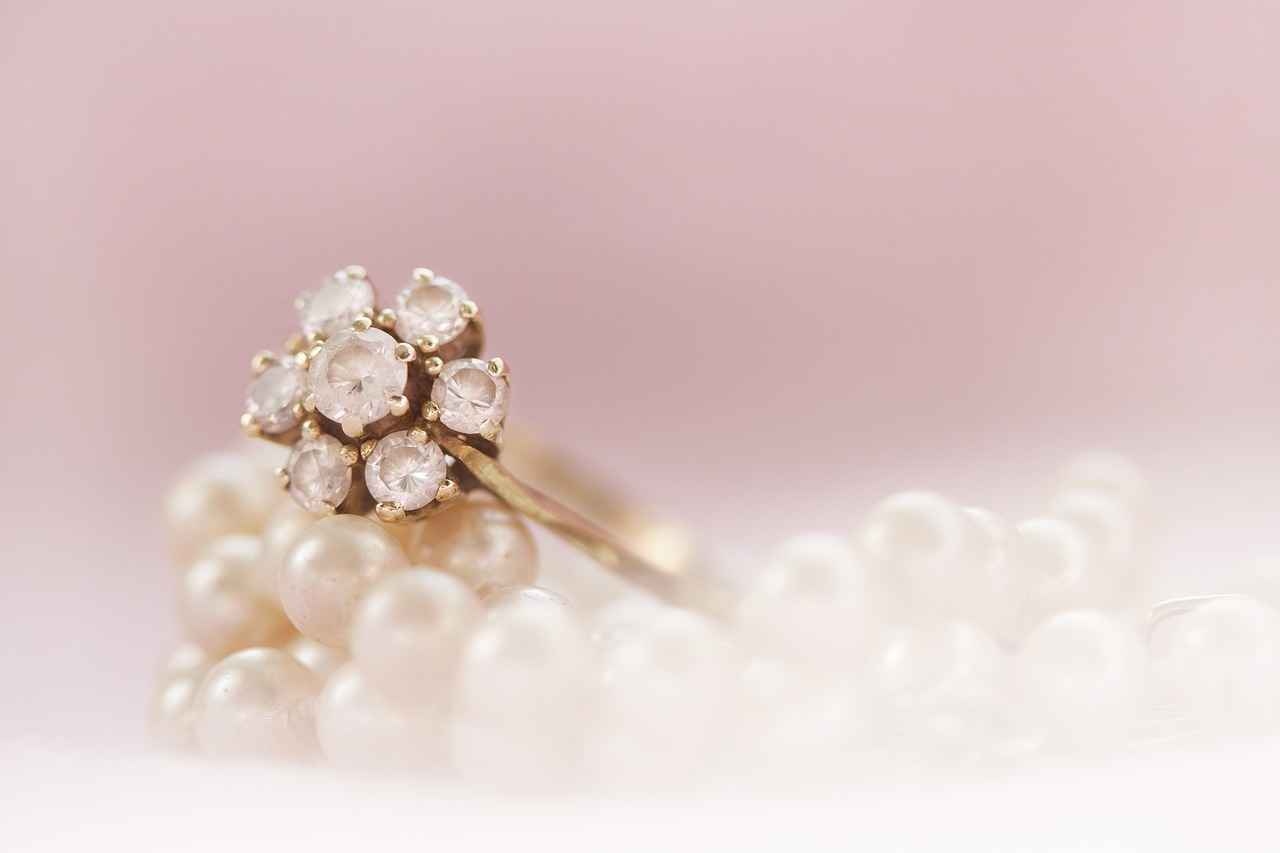
How Has Jewelry Evolved Over the Centuries?
The evolution of jewelry is a fascinating journey that mirrors the shifting values and artistic movements of society throughout history. Jewelry has transcended mere adornment, becoming a powerful symbol of identity, status, and cultural significance. This article delves into how jewelry has evolved over the centuries, highlighting its transformation in design, purpose, and meaning.
Jewelry’s evolution is significantly influenced by cultural, economic, and technological changes. As societies develop, their values and artistic expressions change, which is reflected in the jewelry they create. For instance, the use of materials, craftsmanship techniques, and design aesthetics have all evolved dramatically from ancient times to the present.
In ancient civilizations, jewelry was not merely decorative; it served as a status symbol and a marker of power. For example, in ancient Egypt, jewelry was intricately designed and often imbued with spiritual significance. Pharaohs adorned themselves with gold and precious stones, symbolizing their divine right to rule and their connection to the gods.
During the Roman Empire, jewelry became a means of displaying wealth and social class. The use of gemstones and elaborate designs was a way for individuals to assert their identity within the highly stratified society. Gold, silver, and gemstones were often used to create pieces that showcased both personal and societal status.
As Europe transitioned from the medieval era to the Renaissance, jewelry design underwent significant changes. The introduction of new techniques, such as enameling and gemstone cutting, allowed for more intricate and personalized designs. Jewelry began to reflect not only wealth but also individual artistry and creativity, paving the way for the modern jewelry industry.
In contemporary times, jewelry continues to evolve, influenced by fashion trends and cultural shifts. Modern designers often blend traditional craftsmanship with innovative techniques, resulting in pieces that appeal to diverse tastes. The rise of ethical and sustainable jewelry has also transformed the industry, as consumers increasingly seek pieces that align with their values.
Cultural influences play a significant role in shaping jewelry trends. Different societies attribute various meanings to specific materials and designs, reflecting their unique traditions and histories. For example, ethnic jewelry often embodies cultural heritage, showcasing traditional craftsmanship and designs. Wearing such pieces can foster a sense of pride and connection to one’s roots.
Today, globalization has led to a fusion of styles in jewelry design. Influences from different cultures are blended to create innovative and unique pieces. This blending not only appeals to a broader audience but also maintains the cultural significance of the designs. The accessibility of information through the internet allows consumers to explore diverse styles and meanings.
Technological advancements have also significantly impacted the jewelry industry. From 3D printing to advanced metalworking techniques, technology has enabled designers to push the boundaries of creativity. This evolution allows for greater customization and personalization, catering to the modern consumer’s desires.
In conclusion, the evolution of jewelry is a rich tapestry woven from the threads of history, culture, and artistry. As societal values continue to shift, so too will the designs and meanings of jewelry, ensuring its place as a significant and enduring symbol of human expression.
Ancient Jewelry: Symbols of Power
Throughout history, jewelry has transcended mere decoration, evolving into a profound symbol of power and authority. In ancient civilizations, the adornment of kings and queens with exquisite jewelry was not only a display of wealth but also a representation of their divine right to rule. This intricate relationship between jewelry and power can be observed across various cultures, each with its unique interpretations and significances.
Jewelry in Ancient Egypt
In ancient Egypt, jewelry was intricately linked to the divine and the afterlife. Pharaohs and nobility donned elaborate pieces crafted from gold, precious stones, and enamel, often featuring symbols like the ankh and the eye of Horus. These symbols conveyed protection and life, reinforcing the belief that the pharaohs were not only rulers but also intermediaries between the gods and the people. Jewelry was also buried with the deceased, serving as a means to ensure a prosperous afterlife.
Roman Jewelry: A Display of Status
In ancient Rome, the use of jewelry was a clear indicator of social class and wealth. The elite adorned themselves with intricate designs that showcased their prosperity. Gemstones such as emeralds, rubies, and sapphires were prized possessions, and their ownership signified a person’s status within the rigid Roman class system. Jewelry was often used to convey political allegiance and personal identity, with specific styles and materials denoting one’s rank.
Mesopotamian Influence
Jewelry in Mesopotamia also played a significant role in demonstrating power. Rulers and high priests wore elaborate pieces, often adorned with lapis lazuli and gold, which were believed to possess supernatural properties. The Ishtar Gate, adorned with intricate jewelry motifs, exemplifies how jewelry was interwoven with the religious and political fabric of society.
Jewelry in Ancient India
In ancient India, jewelry was more than just an accessory; it was an integral part of cultural identity and social status. Kings and queens were adorned with heavy gold jewelry, often embedded with precious stones, which signified their power and wealth. The nath (nose ring) and maang tikka (forehead ornament) were not only decorative but also carried cultural significance, symbolizing marital status and social standing.
Chinese Dynasties and Symbolism
During various dynasties in China, jewelry served as a status symbol and a reflection of cultural beliefs. The use of jade, for instance, was prevalent among the elite, as it was believed to bring protection and good fortune. Jewelry pieces often featured motifs that represented longevity and prosperity, reinforcing the connection between adornment and the natural order.
Jewelry as a Political Tool
Across cultures, jewelry was often used as a political tool. Diplomatic gifts in the form of exquisite jewelry pieces were exchanged to solidify alliances and demonstrate power. The intricate craftsmanship of these pieces not only showcased artistic skill but also served as a reminder of the wealth and influence of the giver.
The Legacy of Ancient Jewelry
The significance of ancient jewelry as a symbol of power continues to resonate in modern times. Contemporary jewelry often draws inspiration from ancient designs, reflecting a timeless allure that transcends generations. The historical context of these pieces enriches their value, making them coveted items for collectors and enthusiasts alike.
In conclusion, the exploration of ancient jewelry reveals its multifaceted role as a symbol of power and authority. From the opulent adornments of Egyptian pharaohs to the intricate designs of Roman elites, jewelry has always been a powerful means of communication, reflecting social status and cultural values.
Egyptian Jewelry: A Reflection of Divinity
Egyptian jewelry stands as a testament to the rich cultural heritage and artistry of ancient Egypt. These exquisite pieces were not merely decorative items; they were imbued with deep spiritual and symbolic meanings. The intricate designs often featured symbols of gods and other significant motifs, reflecting the connection between the divine and the pharaoh’s earthly power.
Egyptian jewelry is characterized by its intricate craftsmanship and use of precious materials such as gold, silver, and gemstones. Common elements include:
- Symbolism: Jewelry often depicted gods, goddesses, and other religious symbols, serving as a reminder of the divine.
- Materials: The use of gold was prevalent, as it was associated with the gods and immortality.
- Functionality: Many pieces served dual purposes, acting as both adornments and talismans for protection in the afterlife.
In ancient Egypt, the significance of jewelry extended beyond daily adornment; it played a crucial role in burial rituals. Jewelry was placed in tombs as offerings to the deceased, ensuring their protection and status in the afterlife. The belief was that these items would accompany the pharaoh or noble in their journey beyond death, enhancing their power and status in the afterlife.
Egyptians crafted a variety of jewelry pieces, each with its unique significance:
- Necklaces: Often adorned with beads and amulets, these were worn by both men and women.
- Bracelets: Typically made from gold or silver, they symbolized protection and status.
- Rings: Engraved with hieroglyphics or symbols, rings served as seals and personal identifiers.
- Earrings: Worn by women, these pieces often featured intricate designs and were made from precious metals.
The influence of Egyptian jewelry can still be seen in modern design. Contemporary jewelers often draw inspiration from the elegance and symbolism of ancient pieces. The enduring appeal of Egyptian motifs, such as the Ankh and the Eye of Horus, continues to captivate audiences worldwide. These symbols are not only decorative but also carry profound meanings related to life, death, and protection.
Jewelry in ancient Egypt was a reflection of the society’s values, particularly the importance placed on the afterlife and the divine. The elaborate designs and the significance of materials used illustrate a culture that revered both beauty and spirituality. Wearing such jewelry was a way to showcase not only wealth but also a deep connection to their beliefs and the gods.
In conclusion, Egyptian jewelry serves as a remarkable window into the past, revealing the intricate relationship between art, spirituality, and status. Its legacy continues to inspire and inform modern jewelry design, ensuring that the beauty and significance of these ancient pieces remain alive today.
Roman Jewelry: Status and Identity
Jewelry has always been more than mere adornment; it serves as a profound reflection of one’s status and identity. This is especially true in the context of ancient Rome, where the significance of jewelry transcended its aesthetic appeal. In this article, we will delve into the cultural and social implications of Roman jewelry, highlighting its role as a symbol of wealth and class distinction.
In ancient Rome, jewelry was a powerful indicator of social hierarchy. The elite class adorned themselves with exquisite pieces, often made from precious metals and adorned with gemstones. These items were not just for decoration; they were a way to communicate one’s wealth and position within the rigid class system of Roman society.
Roman jewelry came in various forms, each serving a different purpose and conveying distinct messages about the wearer. Below are some common types:
- Rings: Often engraved with family crests or symbols of power, rings were a staple among the wealthy.
- Bangles and Bracelets: These were frequently worn by both men and women, showcasing intricate designs and craftsmanship.
- Pendants and Necklaces: Adorned with precious stones, these pieces were often worn to signify status and wealth.
- Earrings: While less common, earrings were also a symbol of affluence, especially when made from gold or decorated with gems.
The choice of gemstones in Roman jewelry was particularly telling. Certain stones were associated with specific qualities, and their use was often dictated by social standing. For instance:
- Emeralds: Often linked to fertility and rebirth, these were favored by the elite.
- Diamonds: Rare and highly coveted, diamonds were symbols of ultimate wealth and power.
- Amethyst: Believed to protect against intoxication, this stone was popular among the upper classes.
The craftsmanship involved in creating Roman jewelry was nothing short of remarkable. Skilled artisans employed techniques such as goldsmithing and gem cutting to produce intricate designs that reflected the owner’s social class. The level of detail and artistry in these pieces often served as a testament to the wealth and status of the wearer.
Jewelry in ancient Rome was not merely decorative; it was a status symbol that communicated power and prestige. The wealthy often used jewelry to assert their dominance and to signal their place within the social hierarchy. For instance, during public events, the display of jewelry was a way for the elite to showcase their wealth and garner respect from others.
The legacy of Roman jewelry continues to influence modern design. Today, many contemporary jewelry pieces draw inspiration from the intricate designs and symbolism of ancient Roman adornments. This connection between past and present highlights the enduring allure of jewelry as a status symbol.
In conclusion, Roman jewelry played a crucial role in defining social identity and wealth in ancient Rome. Its intricate designs, choice of materials, and craftsmanship not only served as adornments but also as powerful symbols of status and class distinction. Understanding the historical significance of jewelry can enrich our appreciation for these timeless pieces.
Modern Jewelry: Trends and Cultural Significance
In the contemporary landscape of fashion, jewelry has transcended its traditional boundaries, evolving into a dynamic form of artistic expression. Today, it serves not only as an accessory but also as a reflection of personal identity, cultural heritage, and social values. This article delves into the intricate relationship between modern jewelry, fashion trends, and cultural significance, highlighting how these elements intertwine to shape contemporary styles.
- Sustainable and Ethical Practices: With a growing awareness of environmental issues, many consumers are opting for sustainable jewelry. Brands are now prioritizing eco-friendly materials and ethical sourcing, appealing to a conscientious audience.
- Personalization: Customizable pieces that allow individuals to express their unique stories and identities are gaining popularity. This trend emphasizes the emotional connection people have with their jewelry.
- Mixed Materials: Modern designs often incorporate a blend of materials, such as metal, wood, and gemstones, creating visually striking pieces that challenge traditional norms.
- Minimalism vs. Maximalism: While some trends lean towards minimalist designs, characterized by clean lines and simplicity, others embrace maximalist styles, featuring bold colors and intricate details.
Cultural influences play a pivotal role in shaping modern jewelry trends. As globalization continues to connect diverse cultures, jewelry designers are increasingly drawing inspiration from various traditions. This fusion of styles results in innovative designs that resonate with a broader audience.
- Ethnic Inspirations: Many contemporary pieces incorporate elements from ethnic jewelry, celebrating cultural diversity and heritage. This not only honors traditional craftsmanship but also fosters a sense of pride among wearers.
- Symbolism: Jewelry often carries deep cultural meanings. For example, specific colors or motifs can symbolize love, protection, or prosperity, adding layers of significance to modern pieces.
For many individuals, jewelry serves as a powerful form of self-expression. In a world where personal identity is increasingly celebrated, jewelry allows individuals to showcase their values, beliefs, and unique styles.
- Statement Pieces: Bold, eye-catching designs are often used to make a statement, reflecting the wearer’s personality and confidence.
- Heirloom Jewelry: Family heirlooms carry sentimental value, connecting individuals to their past and cultural roots, making them cherished pieces in modern collections.
The rise of social media has revolutionized the jewelry industry, providing a platform for brands and consumers to connect like never before. Platforms such as Instagram and TikTok have become essential tools for trend discovery and brand promotion.
- Influencer Marketing: Influencers and celebrities play a significant role in shaping consumer preferences. Their endorsements can elevate the status of specific brands and designs, making them highly sought after.
- Online Shopping: The convenience of online marketplaces has made luxury jewelry more accessible. Consumers can explore a vast array of options, fostering a culture of exploration and experimentation.
In conclusion, modern jewelry is a vibrant and evolving field that reflects the complexities of contemporary society. From cultural influences to personal expression, the significance of jewelry continues to grow, making it an essential aspect of modern fashion. As trends evolve, the interplay between tradition and innovation will undoubtedly shape the future of jewelry design.
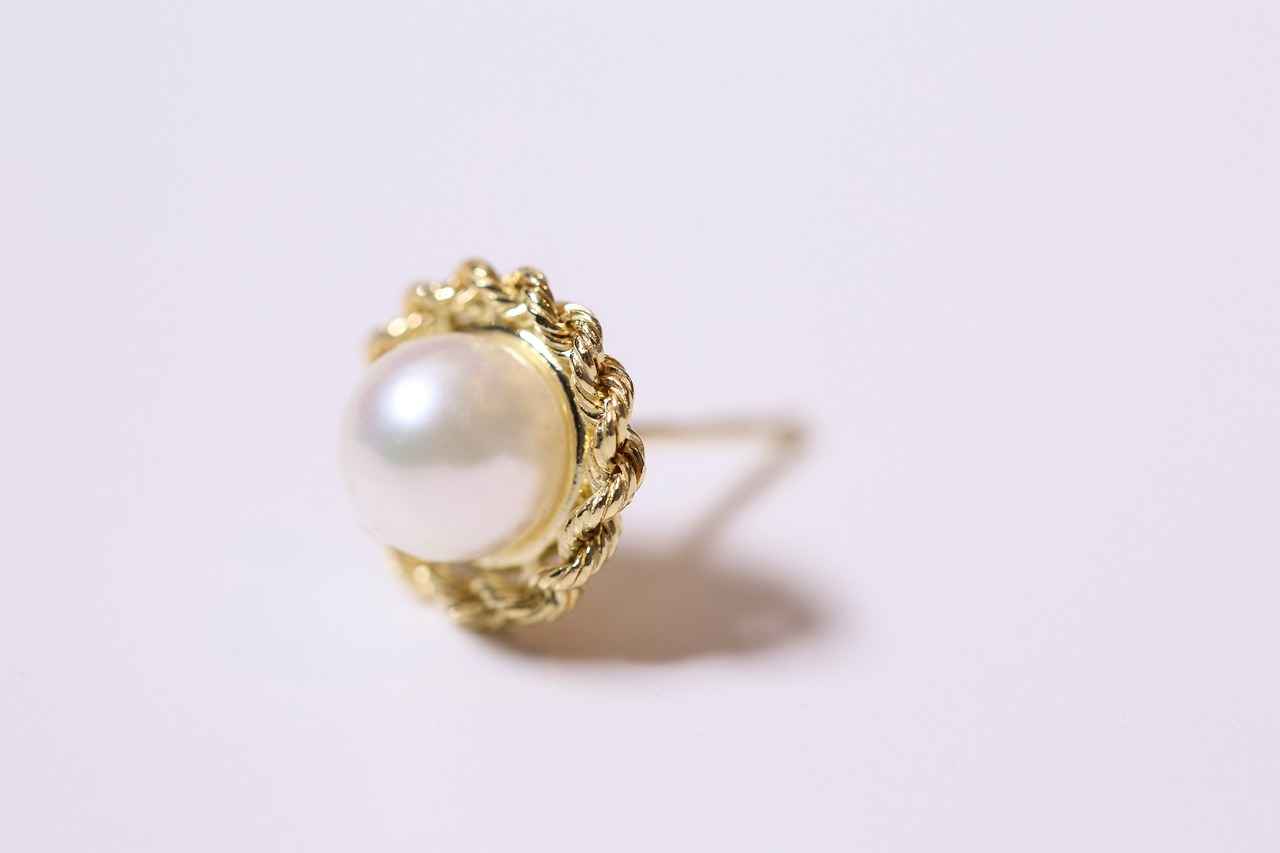
Why Do People Invest in Jewelry?
Investing in jewelry has become a popular trend for individuals seeking to secure their financial future. This practice is often perceived as a means of preserving wealth, as high-quality pieces can appreciate over time, making them an attractive option for savvy investors. But what drives people to invest in jewelry?
Jewelry, particularly pieces made from precious metals and gemstones, can hold substantial intrinsic value. Unlike other investments, such as stocks or real estate, jewelry can provide both aesthetic enjoyment and financial returns. Here are some key reasons why:
- Appreciation Over Time: High-quality jewelry, especially vintage or designer pieces, can appreciate significantly in value. Collectors and investors often seek out limited editions or unique designs that are likely to increase in demand.
- Inflation Hedge: Precious metals like gold and silver tend to retain their value during economic downturns, making jewelry a reliable hedge against inflation.
- Liquidity: In times of need, jewelry can be sold relatively easily, providing quick access to cash. This liquidity is a key advantage for investors.
Beyond financial considerations, many individuals invest in jewelry for emotional and personal reasons. The sentimental value attached to certain pieces can enhance their worth in the eyes of the owner:
- Heirlooms: Family heirlooms often carry deep emotional significance, making them priceless to the owner despite their market value.
- Personal Milestones: Jewelry is frequently associated with significant life events, such as engagements, weddings, or anniversaries, adding layers of meaning and value.
When considering jewelry as an investment, not all pieces are created equal. Here are some types that are generally regarded as wise investments:
- Fine Jewelry: Pieces made from high-quality materials, such as platinum, gold, and diamonds, often hold their value well.
- Antique and Vintage Jewelry: Items that are rare or have historical significance can appreciate significantly, making them sought-after by collectors.
- Designer Jewelry: Brands with a strong reputation, such as Cartier or Tiffany & Co., often see their pieces appreciate due to brand loyalty and recognition.
For those interested in entering the jewelry investment market, here are some practical steps to consider:
- Do Your Research: Understanding the market and identifying trends is crucial. Follow reputable sources and attend jewelry shows to gain insights.
- Buy from Reputable Dealers: Ensure that you purchase from established jewelers who provide authentication and certification for their pieces.
- Consider Insurance: Protect your investment by insuring your jewelry, which can safeguard against loss or damage.
While investing in jewelry can be lucrative, it’s essential to be aware of the risks involved:
- Market Volatility: The jewelry market can be unpredictable, and values may fluctuate based on trends and economic conditions.
- Authenticity Issues: The presence of counterfeit pieces can pose a significant risk. Always seek certification and verification.
In summary, investing in jewelry can be a rewarding endeavor for both financial and emotional reasons. With careful consideration and informed choices, individuals can enhance their portfolios while enjoying the beauty and significance of their pieces.
The Emotional Value of Jewelry
Jewelry is much more than just a decorative accessory; it often carries profound emotional significance. The emotional value of jewelry can be multifaceted, encompassing sentiments tied to love, heritage, and personal milestones.
Heirloom jewelry is typically passed down through generations, serving as a tangible connection to family history. Each piece often comes with its own story, embodying the memories and experiences of those who wore it before. For many, wearing a family heirloom is a way to honor their ancestors and keep their legacy alive. This connection often enhances the emotional value of the piece, making it irreplaceable.
Personalized jewelry, such as engraved rings or custom-made necklaces, allows individuals to express their unique stories. These pieces often commemorate significant life events, such as weddings, births, or anniversaries. The act of personalizing jewelry transforms it into a symbol of love and commitment, deepening its emotional significance. A name or date engraved on a piece can evoke powerful memories, making it a cherished possession.
- Graduation Gifts: Jewelry is often given as a gift to mark educational achievements, serving as a reminder of hard work and dedication.
- Engagement and Wedding Rings: These pieces symbolize the beginning of a new chapter in life, representing love and partnership.
- Anniversary Gifts: Jewelry is commonly exchanged on anniversaries to celebrate enduring love and commitment.
Each of these milestones is often celebrated with a piece of jewelry that holds special meaning, further enhancing its emotional value.
For many individuals, jewelry serves as a form of self-expression. The styles, materials, and designs chosen can reflect personal tastes and values. Whether it’s a bold statement piece or a delicate charm bracelet, jewelry can convey messages about one’s personality and beliefs. This aspect of jewelry adds another layer of emotional significance, as it allows individuals to showcase their identity in a meaningful way.
Jewelry can also play a therapeutic role during times of loss. Memorial jewelry, which incorporates elements like ashes or locks of hair, allows individuals to keep their loved ones close. Such pieces can serve as a source of comfort and a reminder of cherished memories, helping to navigate the grieving process.
Cultural traditions often imbue jewelry with additional emotional significance. In many cultures, specific pieces are worn during important life events, symbolizing blessings, protection, or prosperity. For instance, in some societies, a wedding necklace may be believed to bring good fortune to the marriage. These cultural connections can enhance the emotional value of jewelry, making it not just a personal artifact but also a representation of broader societal beliefs.
In conclusion, the emotional value of jewelry is profound and multifaceted. From heirlooms that connect us to our past to personalized pieces that celebrate our unique stories, jewelry serves as a powerful reminder of love, memories, and milestones. Its ability to reflect personal identity and cultural beliefs further deepens its significance, making it an integral part of our lives.
Jewelry as a Form of Self-Expression
Jewelry has transcended its role as mere adornment and evolved into a powerful medium of self-expression. For many individuals, the pieces they choose to wear are not just accessories; they are profound reflections of their personality, beliefs, and life experiences. This article delves into how jewelry serves as a unique canvas for self-expression, exploring the various ways individuals use it to communicate their identity.
Jewelry allows individuals to showcase their unique style and personal values. Whether it’s a bold statement necklace, a delicate bracelet, or a vintage ring, each piece tells a story. People often select jewelry that resonates with their tastes, cultural backgrounds, and life journeys, making it a deeply personal choice.
- Custom Pieces: Many opt for custom-made jewelry that embodies their personal stories or significant milestones. This could include engagement rings, family heirlooms, or pieces engraved with meaningful dates.
- Ethnic and Cultural Jewelry: Jewelry that reflects one’s heritage can be a powerful form of self-expression. Wearing traditional pieces can foster a sense of pride and connection to one’s roots.
- Fashion Statements: Trendy pieces can be used to convey individuality and style. Many individuals use jewelry to align themselves with specific fashion movements or to stand out in a crowd.
Jewelry can also be a medium for expressing values and beliefs. For instance, many choose to wear pieces made from ethically sourced materials or those that support social causes. This not only reflects personal ethics but also fosters a connection with like-minded individuals.
The emotional resonance of jewelry is undeniable. Pieces often carry sentimental value, representing love, friendship, or significant life events. For example, a necklace gifted by a loved one can evoke feelings of affection and remembrance, serving as a daily reminder of that special bond.
Personal style is a significant factor influencing jewelry choices. Some individuals prefer minimalist designs, while others gravitate towards bold, intricate pieces. This selection process is often a reflection of one’s lifestyle, fashion sense, and even mood. Jewelry becomes a way to express individuality, allowing wearers to adapt their look to various situations.
Jewelry can serve as a statement piece, drawing attention and sparking conversations. For example, a unique brooch or oversized earrings can become the focal point of an outfit, allowing the wearer to express their creativity and personal flair. By choosing distinctive pieces, individuals can communicate their personality without saying a word.
In the digital age, social media platforms have transformed how individuals express themselves through jewelry. Influencers and celebrities often showcase their unique styles, inspiring others to experiment with their jewelry choices. This online exposure has led to a greater appreciation for diverse styles and the emergence of new trends, encouraging individuals to embrace their personal aesthetics.
Choosing the right jewelry involves understanding personal preferences and what resonates with one’s identity. Here are some tips:
- Reflect on your personal style and what makes you feel confident.
- Consider the stories behind pieces—what do they represent for you?
- Explore various materials and designs to find what resonates with your values.
Ultimately, jewelry is more than just an accessory; it is a powerful tool for self-expression. By carefully selecting pieces that reflect personal identity, values, and emotions, individuals can create a unique narrative that speaks to who they are.
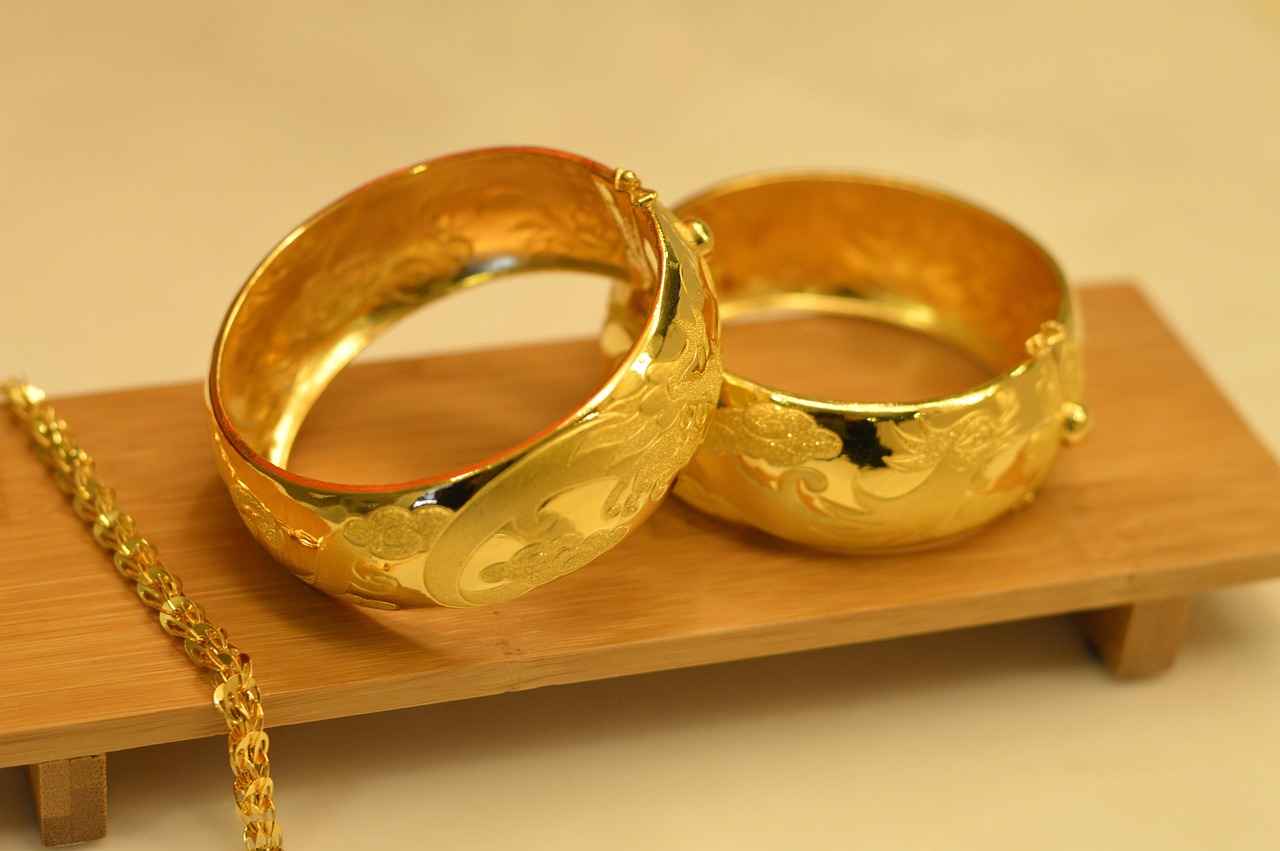
What Role Does Culture Play in Jewelry’s Status?
Cultural influences play a pivotal role in shaping the status and significance of jewelry across various societies. From ancient traditions to modern interpretations, the meanings attributed to different materials and designs reflect the rich tapestry of human history and cultural identity.
Jewelry is not merely an accessory; it is a cultural artifact that embodies the values, beliefs, and artistic expressions of a society. For instance, in many Indigenous cultures, jewelry is crafted using locally sourced materials, creating a direct link between the wearer and their environment. These pieces often carry deep symbolic meanings, representing elements such as spirituality, heritage, and community.
Different cultures assign unique meanings to specific materials used in jewelry. For example:
- Gold is often seen as a symbol of wealth and prosperity in many cultures, while in others, it may represent purity and divine connection.
- Silver is frequently associated with moonlight and femininity, often used in jewelry that celebrates life events such as births and weddings.
- Gemstones hold varied meanings; for instance, emeralds are linked to fertility and rebirth in some cultures, while diamonds symbolize eternal love and commitment.
Many cultures have established traditions surrounding the creation and gifting of jewelry. In India, for instance, traditional wedding jewelry is rich with symbolism, often passed down through generations. Each piece is imbued with stories and familial connections, enhancing its emotional value.
Similarly, in African cultures, jewelry is often used in rituals and celebrations, marking important life transitions such as coming of age or marriage. The designs and materials used are deeply rooted in cultural significance, often reflecting tribal identity and community bonds.
With the advent of globalization, jewelry design has become a melting pot of various cultural influences. Contemporary jewelry often features a blend of styles, incorporating elements from different traditions. This fusion allows for greater creativity and innovation while also raising questions about cultural appropriation and authenticity.
For instance, while it is common to see tribal-inspired designs in modern jewelry, it is essential to acknowledge and respect the origins of these designs. Authenticity and ethical sourcing are becoming increasingly important to consumers who wish to honor the cultures that inspire their jewelry choices.
Jewelry often serves as a canvas for personal stories and cultural heritage. Heirloom pieces passed down through generations carry the weight of family history, connecting the wearer to their ancestors. These items are not merely decorative; they are imbued with memories, traditions, and a sense of belonging.
Moreover, personalized jewelry, such as name necklaces or pieces with significant symbols, allows individuals to express their unique identities while celebrating their cultural backgrounds. This intersection of personal and cultural narratives enhances the overall value and significance of jewelry.
As society continues to evolve, so too does the landscape of jewelry design. There is a growing trend towards sustainability and ethical production, with consumers increasingly seeking out brands that prioritize fair trade and environmentally friendly practices. This shift reflects a broader cultural movement towards mindfulness and responsibility.
Additionally, the rise of technology in jewelry design, such as 3D printing, allows for greater customization and innovation while respecting traditional craftsmanship. This blend of old and new not only honors cultural heritage but also paves the way for future generations to explore and redefine their connections to jewelry.
Ethnic Jewelry: Heritage and Identity
Ethnic jewelry serves as a vibrant representation of cultural heritage, showcasing the rich tapestry of traditions, beliefs, and craftsmanship that define various communities. These pieces are not merely decorative; they are imbued with significance and history, often reflecting the stories and identities of the people who create and wear them.
Ethnic jewelry encompasses a wide range of adornments that originate from specific cultural backgrounds. These pieces often incorporate traditional techniques and materials, making them unique to their respective cultures. From intricate beadwork to metalwork, ethnic jewelry is a testament to the artistry and skill passed down through generations.
Wearing ethnic jewelry can foster a profound sense of pride and connection to one’s roots. For many, these pieces serve as a reminder of their ancestry and the cultural narratives that shape their identities. By donning such jewelry, individuals can express their heritage and celebrate their cultural background.
Ethnic jewelry often features symbols, motifs, and colors that hold deep meaning within a culture. For instance, in many Indigenous communities, specific patterns may represent spiritual beliefs or natural elements. These designs are not arbitrary; they convey messages about the community’s values, history, and connection to the world around them.
The craftsmanship involved in creating ethnic jewelry is often labor-intensive and requires specialized skills. Techniques can vary widely, from hand-hammering metals to weaving intricate patterns with beads. This traditional craftsmanship not only preserves cultural practices but also enhances the value of the jewelry.
Wearing ethnic jewelry can also act as a bridge to connect with others who share similar backgrounds or interests. It can spark conversations about cultural traditions and promote a sense of community and belonging. Many individuals find that these pieces help them connect with their cultural roots, fostering a deeper appreciation for their heritage.
In contemporary fashion, ethnic jewelry has gained popularity beyond cultural boundaries. Designers often incorporate traditional elements into modern styles, creating a fusion that appeals to a global audience. This trend not only celebrates diversity but also raises awareness about different cultures and their unique stories.
When selecting ethnic jewelry, it is essential to consider the source and authenticity of the pieces. Supporting artisans and communities directly ensures that the cultural significance is honored and that the creators receive fair compensation for their work. Additionally, understanding the stories behind the jewelry can enrich the wearing experience.
Ethnic jewelry is much more than an accessory; it is a powerful symbol of heritage and identity. By embracing these pieces, individuals not only celebrate their cultural backgrounds but also contribute to the preservation of traditional craftsmanship and storytelling. In a world increasingly focused on globalization, ethnic jewelry serves as a reminder of the beauty and richness of cultural diversity.
Contemporary Jewelry Trends: Global Influences
In today’s interconnected world, contemporary jewelry trends are increasingly shaped by a rich tapestry of global cultures. This phenomenon has led to a fascinating fusion of styles that not only captivates the eye but also resonates deeply with wearers on a cultural level. As we delve into this topic, it’s essential to explore how these influences manifest in modern designs and the significance they hold.
The blending of diverse cultural elements in jewelry design is a reflection of our global society. Designers often draw inspiration from traditional motifs, materials, and techniques, resulting in pieces that celebrate various heritages. For instance, Indian jewelry is renowned for its intricate designs and vibrant gemstones, while Native American pieces often feature turquoise and silver, embodying spiritual significance.
- Wider Appeal: By incorporating elements from multiple cultures, jewelry can attract a broader audience, making it accessible and desirable to individuals from various backgrounds.
- Innovative Designs: The fusion of styles leads to unique and innovative designs that stand out in a saturated market.
- Cultural Appreciation: This blending promotes awareness and appreciation of different cultures, fostering a sense of unity and respect among wearers.
Modern jewelry is not merely about aesthetics; it often carries profound cultural meanings. For example, pieces that incorporate African tribal designs may symbolize strength and community, while those inspired by Asian art might reflect harmony and balance. This cultural significance adds layers of meaning to the jewelry, allowing wearers to express their identities and values.
As global awareness of environmental issues grows, many contemporary jewelry designers are embracing sustainability. This trend often includes the use of ethically sourced materials and traditional crafting techniques that minimize environmental impact. By blending cultural heritage with sustainable practices, these designers create pieces that are not only beautiful but also responsible.
Advancements in technology are also playing a crucial role in shaping contemporary jewelry trends. Techniques such as 3D printing allow for intricate designs that were once impossible to achieve. This technological integration enables designers to experiment with forms and styles, further enriching the cultural fusion in their work.
| Jewelry Type | Cultural Influences | Significance |
|---|---|---|
| Bohemian Necklaces | Gypsy, Native American | Freedom of expression |
| Ethnic Bangles | Indian, African | Celebration of heritage |
| Geometric Earrings | Japanese, Scandinavian | Minimalism and elegance |
In summary, the influence of global cultures on contemporary jewelry trends has led to an exciting fusion of styles that resonates with a wide audience. This blending not only enhances the aesthetic appeal of jewelry but also enriches its cultural significance, making it a powerful form of self-expression. As trends continue to evolve, we can expect to see even more innovative designs that honor the diverse traditions from which they originate.
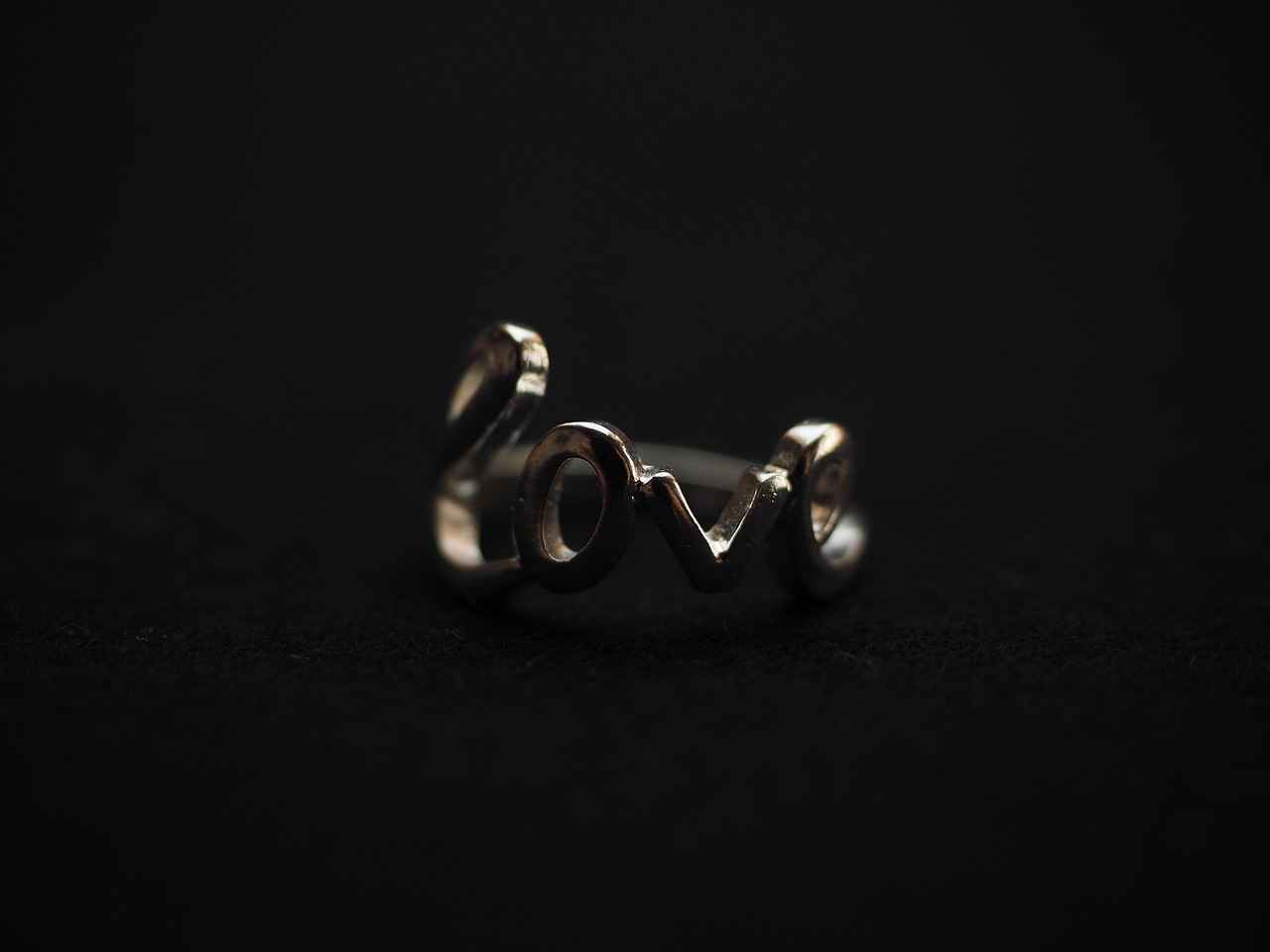
How Does Social Media Influence Jewelry Trends?
In today’s digital age, social media has become a powerful tool that shapes various industries, with jewelry being no exception. Platforms like Instagram and Pinterest have transformed the way jewelry is marketed and consumed, allowing trends to emerge and spread at an unprecedented pace. This article explores how social media influences jewelry trends and consumer behavior.
Social media platforms have revolutionized the marketing landscape for jewelry brands. Unlike traditional advertising methods, social media allows brands to connect directly with consumers, creating a more personal and engaging experience. This direct interaction fosters a sense of community and loyalty among followers, which can significantly impact purchasing decisions.
The visually-driven nature of platforms like Instagram and Pinterest enables jewelry brands to showcase their products in a captivating way. High-quality images and videos can highlight the intricate details of a piece, making it more appealing to potential buyers. The use of hashtags also allows consumers to discover new styles and trends effortlessly.
Influencers play a crucial role in the dissemination of jewelry trends. When popular figures wear and promote specific jewelry brands, their followers are likely to emulate their style. This phenomenon can lead to a surge in demand for particular pieces, effectively elevating their status in the market. The authenticity that influencers bring to their endorsements can make consumers feel more connected to the products.
User-generated content (UGC) is another significant aspect of social media that influences jewelry trends. When customers share photos of themselves wearing jewelry, it not only provides social proof but also encourages others to purchase those items. Brands often repost UGC on their official pages, creating a sense of community and trust around their products.
The rise of online marketplaces has democratized access to luxury jewelry. Consumers can now explore an extensive range of options from various brands, making high-status pieces more attainable than ever before. This accessibility allows consumers to compare prices and styles, leading to more informed purchasing decisions.
Social media allows trends to evolve in real-time, with new styles emerging almost daily. Brands can quickly adapt their offerings based on consumer feedback and trending hashtags. This responsiveness helps jewelry brands stay relevant and cater to the ever-changing tastes of their audience.
Social media not only influences trends but also plays a critical role in building brand loyalty. Engaging content, such as behind-the-scenes looks at the design process or customer stories, helps brands connect with their audience on a deeper level. When consumers feel a personal connection to a brand, they are more likely to become repeat buyers.
While social media offers numerous benefits, it also comes with risks. Negative feedback can spread quickly, potentially harming a brand’s reputation. Additionally, the fast-paced nature of social media can lead to trends becoming oversaturated, making it challenging for brands to stand out.
In conclusion, social media has fundamentally changed the landscape of jewelry marketing and consumption. By leveraging platforms like Instagram and Pinterest, brands can connect with consumers more effectively, showcase their products in visually appealing ways, and adapt to trends in real-time. As the jewelry industry continues to evolve, social media will undoubtedly remain a key player in shaping consumer choices and perceptions of status.
Influencers and Celebrity Endorsements
play a crucial role in shaping jewelry trends today. As public figures embrace specific brands or styles, they not only showcase their personal taste but also significantly influence consumer perceptions and desires. This phenomenon has transformed the jewelry market, making it essential to understand how these endorsements impact both brands and consumers.
When celebrities wear particular jewelry pieces, they often create a sense of urgency among fans and followers. This effect can lead to a rapid increase in demand for the showcased items. For instance, when a popular actress is seen wearing a unique necklace at a major event, it can spark a trend that sees similar styles flying off the shelves.
- Authenticity: Influencers often build their brands on authenticity and relatability. Their followers trust their recommendations, making their endorsement of a jewelry brand highly effective.
- Engagement: Influencers engage with their audience through social media, creating a community around their style choices. This interaction fosters a deeper connection between the influencer, the brand, and potential customers.
- Visual Appeal: Jewelry is inherently visual, and influencers excel at showcasing pieces in aesthetically pleasing ways, making them more desirable to their audience.
Platforms like Instagram, TikTok, and Pinterest have become vital in disseminating jewelry trends. The visual nature of these platforms allows for stunning imagery and creative content that can quickly go viral. Hashtags associated with jewelry trends can lead to widespread exposure, making it easier for consumers to discover new styles and brands.
Brands that collaborate with influencers can enjoy numerous benefits:
1. Increased brand visibility and reach.2. Access to niche markets and targeted audiences.3. Enhanced credibility through association with trusted figures.4. Opportunities for creative marketing campaigns that resonate with consumers.
When consumers see their favorite celebrities or influencers wearing certain jewelry pieces, they often feel compelled to emulate their style. This phenomenon is known as social proof, where individuals look to others for cues on what is fashionable or desirable. As a result, jewelry brands that effectively leverage influencer partnerships can experience a surge in sales and brand loyalty.
While influencer marketing can be highly effective, it is not without challenges. Brands must carefully choose influencers whose values align with their own to avoid potential backlash. Additionally, the rapidly changing nature of social media trends can make it difficult for brands to keep up, necessitating a flexible and responsive marketing strategy.
In summary, the impact of celebrity endorsements and influencer partnerships on jewelry trends is profound. As public figures continue to showcase brands and styles, they elevate the perceived status of these pieces, driving consumer interest and demand. Understanding this dynamic is essential for both consumers and brands navigating the ever-evolving jewelry market.
Online Marketplaces and Accessibility
The digital age has transformed the way we shop, and the rise of online marketplaces has significantly changed the luxury jewelry landscape. No longer confined to exclusive boutiques or high-end department stores, consumers now have the opportunity to explore an extensive array of luxury jewelry options from the comfort of their homes.
Online marketplaces have effectively democratized access to luxury jewelry. Platforms such as Etsy, Amazon, and specialized jewelry sites allow consumers to browse through a diverse selection of pieces, ranging from handcrafted artisan items to renowned luxury brands. This accessibility has made high-status jewelry more attainable than ever before.
- Variety: Online platforms offer a vast selection of styles, materials, and price points, catering to a wide range of tastes and budgets.
- Convenience: Shoppers can browse and purchase jewelry at any time, eliminating the need to visit multiple physical stores.
- Competitive Pricing: With numerous sellers vying for attention, consumers often benefit from competitive pricing and special promotions.
- Detailed Information: Online listings typically provide comprehensive details, including materials, dimensions, and care instructions, helping consumers make informed decisions.
While the benefits are substantial, there are also potential risks to consider. Consumers should be wary of counterfeit items and ensure they are purchasing from reputable sellers. Reading reviews, checking return policies, and verifying the authenticity of the jewelry can mitigate these risks.
Online marketplaces have adapted to meet the evolving needs of consumers. Many platforms now feature customization options, allowing buyers to create personalized pieces that reflect their individual styles. This level of personalization was previously reserved for high-end jewelers but is now accessible to a broader audience.
Social media has become a powerful tool in shaping jewelry trends and consumer behavior. Influencers and celebrities showcase their favorite pieces on platforms like Instagram, driving interest and demand. The visibility of luxury jewelry on social media has further accelerated its mainstream appeal, making it easier for consumers to discover and purchase high-status items.
Many online jewelry retailers are investing in technology to improve the shopping experience. Virtual try-on tools and augmented reality applications allow consumers to visualize how pieces will look on them, enhancing confidence in their purchases. Additionally, personalized recommendations based on browsing history and preferences make the online shopping journey more tailored and enjoyable.
As technology continues to evolve, the future of luxury jewelry in online marketplaces looks promising. Innovations in blockchain technology may soon provide greater transparency regarding the sourcing and authenticity of materials, further enhancing consumer trust. Moreover, the integration of artificial intelligence may lead to even more personalized shopping experiences, catering to individual preferences and styles.
In summary, the rise of online marketplaces has transformed the luxury jewelry landscape, making high-status pieces more accessible and appealing to a wider audience. With the convenience of online shopping, diverse options, and the influence of social media, consumers are empowered to explore and invest in jewelry like never before.
Frequently Asked Questions
- Why is jewelry considered a status symbol?
Jewelry has been a marker of wealth and social standing for centuries. Its craftsmanship and intrinsic value often reflect the owner’s success, making it a tangible representation of prestige.
- How has the design of jewelry changed over time?
The design of jewelry has evolved significantly, influenced by societal values and artistic movements. From ancient civilizations to modern trends, jewelry has transformed while maintaining its symbolic importance.
- What emotional significance does jewelry hold?
Beyond monetary value, jewelry often carries deep sentimental meaning. Heirlooms and personalized pieces symbolize love and cherished memories, making them invaluable to the wearer.
- How does culture influence the meaning of jewelry?
Cultural influences shape the meanings and values attributed to jewelry. Different societies have unique traditions that inform the significance of specific materials and designs.
- What role does social media play in jewelry trends?
Social media has transformed how jewelry is marketed, with platforms like Instagram rapidly spreading trends. Influencers and celebrities can elevate the perceived status of certain pieces, impacting consumer choices.

